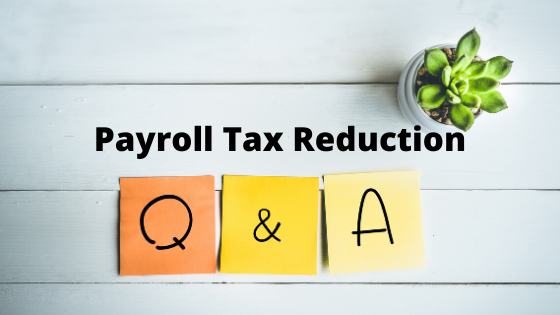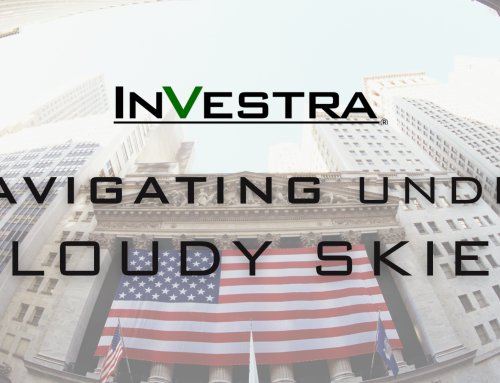The Trump administration has recently signaled that it’s looking at temporary reduction in payroll taxes as one way it can help support the economy through any COVID-19-releated economic slowdown. Today we take a brief look at what a payroll reduction is, how it would be implemented, and what it might do.
What are payroll taxes? Payroll taxes are taxes paid by employers and employees, primarily to cover the cost of Social Security and Medicare. Social security taxes are 12.4% of wages (up to a cap), half paid by the employer and half paid by the employee, while Medicare taxes are 2.9%, again evenly divided between employer and employee. Those who are self-employed pay both the employer and employee taxes.
What would a payroll tax reduction look like? The plan under discussion would temporarily reduce the size of the payroll tax for employees. As a result, for anyone who receives a paycheck, take-home pay would be higher. This option is attractive for policymakers due to the speed in which the stimulus can be delivered and its influence on consumer spending.
How large would the reduction be and how long would it last? That’s still under discussion. In 2011, there was a 2% reduction in payroll taxes to help stimulate the economy, which lasted through the end of 2012. A 2% reduction would probably be the starting point for the current conversation. Since the reduction is specifically aimed at any COVID-19-releated slowdown, it would be unlikely to extend beyond 2020.
How will the tax reduction help stimulate the economy? Increased take-home pay may help encourage spending during a period when people may otherwise be scaling back. Any fiscal stimulus package may also increase confidence that any slowdown would be manageable, which could also help maintain demand and support overall economic activity. However, if most of the stimulus simply goes into savings the impact would be minimal.
How would the tax reduction be paid for? In the short term, the reduction will reduce tax revenue without cutting government spending, thereby increasing the deficit. Some of those costs would be offset if the tax break helps limit the magnitude of the slowdown, since a stronger economy would generate more tax revenue.
IMPORTANT DISCLOSURES
This material is for general information only and is not intended to provide specific advice or recommendations for any individual. There is no assurance that the views or strategies discussed are suitable for all investors or will yield positive outcomes. Investing involves risks including possible loss of principal. Any economic forecasts set forth may not develop as predicted and are subject to change.
References to markets, asset classes, and sectors are generally regarding the corresponding market index. Indexes are unmanaged statistical composites and cannot be invested into directly. Index performance is not indicative of the performance of any investment and do not reflect fees, expenses, or sales charges. All performance referenced is historical and is no guarantee of future results.
Any company names noted herein are for educational purposes only and not an indication of trading intent or a solicitation of their products or services. LPL Financial doesn’t provide research on individual equities. All information is believed to be from reliable sources; however, LPL Financial makes no representation as to its completeness or accuracy.
This Research material was prepared by LPL Financial, LLC.
Securities and advisory services offered through LPL Financial (LPL), a registered investment advisor and broker-dealer (member FINRA/SIPC).
Insurance products are offered through LPL or its licensed affiliates. To the extent you are receiving investment advice from a separately registered independent investment advisor that is not an LPL affiliate, please note LPL makes no representation with respect to such entity.
If your representative is located at a bank or credit union, please note that the bank/credit union is not registered as a broker-dealer or investment advisor. Registered representatives of LPL may also be employees of the bank/credit union.
These products and services are being offered through LPL or its affiliates, which are separate entities from, and not affiliates of, the bank/credit union. Securities and insurance offered through LPL or its affiliates are:
- Not Insured by FDIC/NCUA or Any Other Government Agency
- Not Bank/Credit Union Guaranteed
- Not Bank/Credit Union Deposits or Obligations
- May Lose Value
For Public Use – Tracking 1-963197








